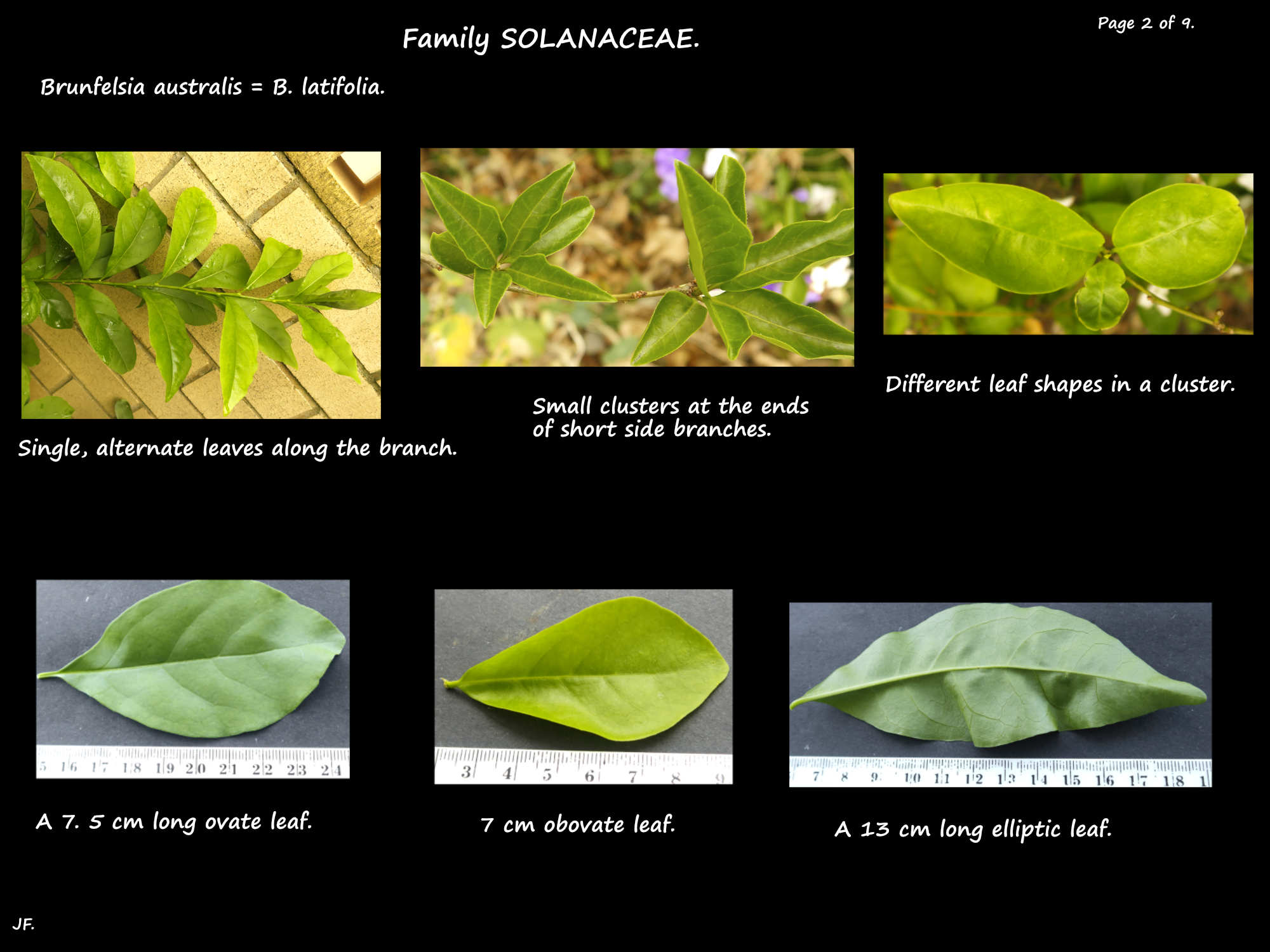Brunfelsia australis, B. latifolia or B. bonodora.
There seems to be no universal agreement on the correct name.
NSW uses Brunfelsia latifolia with Brunfelsia australis as a synonym.
World Flora Online and The Plant List have all as accepted names.
It also has ‘Brunfelsia bonodora (syn. B. australis, B. latifolia)’ and ‘Brunfelsia latifolia [Invalid] Synonym’.
It is seen for sale in Australia as both B. australis and B. latifolia but is rarely seen as B. bonodora.
Brunfelsia australis, Brunfelsia pauciflora and some of their cultivars are all known
as Yesterday, today and tomorrow.
B. australis is a rounded, evergreen shrub commonly 2 to 4 m high but it may be more.
Many seen in gardens are at the lower end of the range as they are pruned.
Its many branches, arising close to the base, have grey-brown bark.
The shiny mid-green foliage is dense.
The leathery leaves, on petioles up to 4 mm long alternate along the branches.
Their shape varies between ovate, obovate and elliptic.
They are 4 to 13 cm long and 3 to 5.5 cm wide.
The base is wedge-shaped and the tip tapers to a point or is rounded, sometimes with a mucro.
There may be hairs along the midrib on the lower surface.
Terminal inflorescences mostly consist of 2 or 3 flowers but there may be up to 10.
Each is on a pedicel around 7 mm long that may be smooth or have a few glandular hairs.
There are one or two leaf-like, hairy bracts up to 1 cm long at its base.
The salverform shaped flowers are around 5 cm across.
The calyx tube and its 5 pointed lobes are roughly equal in length.
(Descriptions seen are ‘9 to 13 mm long’ and ‘at least half the length of the corolla tube’).
The long thin corolla tube has glandular hairs externally.
The 5 roughly equal lobes are round.
When they open the flowers are purple or ocasionally blue.
The underside of the lobes is white or a paler shade of the top.
They fade to mauve on the second day then white on the third day.
The narrow, raised and thickened ring around the throat is the corona.
It, and a narrow area of the lobe bases are white giving the flowers a white eye.
There are small hairs on the outer surface of the corona.
The 2 unequal pairs of stamens insert into the upper part of the corolla tube.
The anthers of the upper pair sit in the throat beside the stigma.
There is a nectiferous disc around the base of the ovary.
The 2 mm high pale green, ovate ovary has a single style.
The style splits into 2 unequal, blunt lobes with the green stigma between them.
Capsules are rarely seen but are said to be roughly spherical and 1 to 2 cm long.
They mature from green to brown or black and hold up to 12 angled, dark brown seeds.
The very similar Brunfelsia pauciflora is also seen as Yesterday, Today and Tomorrow.
B. pauciflora differs in having some longer leaves (8 to 16 cm), longer petioles
(over 5 mm and up to 12), leaves that are not obovate, a longer calyx (20 to 32 mm
with lobes up to 8 mm long) and the flowers have no perfume.
Brunfelsia australis ‘White Magic’.
The Mt. Coot-tha Botanic Gardens has one of these but I have been unable to find anything about it.
The only reference seen is a 2013 catalogue from Aitken & Newman, Tube growers at Palmwoods.
It is only a list with no details.
Brunfelsia australis ‘Sweet & Petite’ has masses of fragrant mauve flowers on a 1 m high shrub.
J.F.










